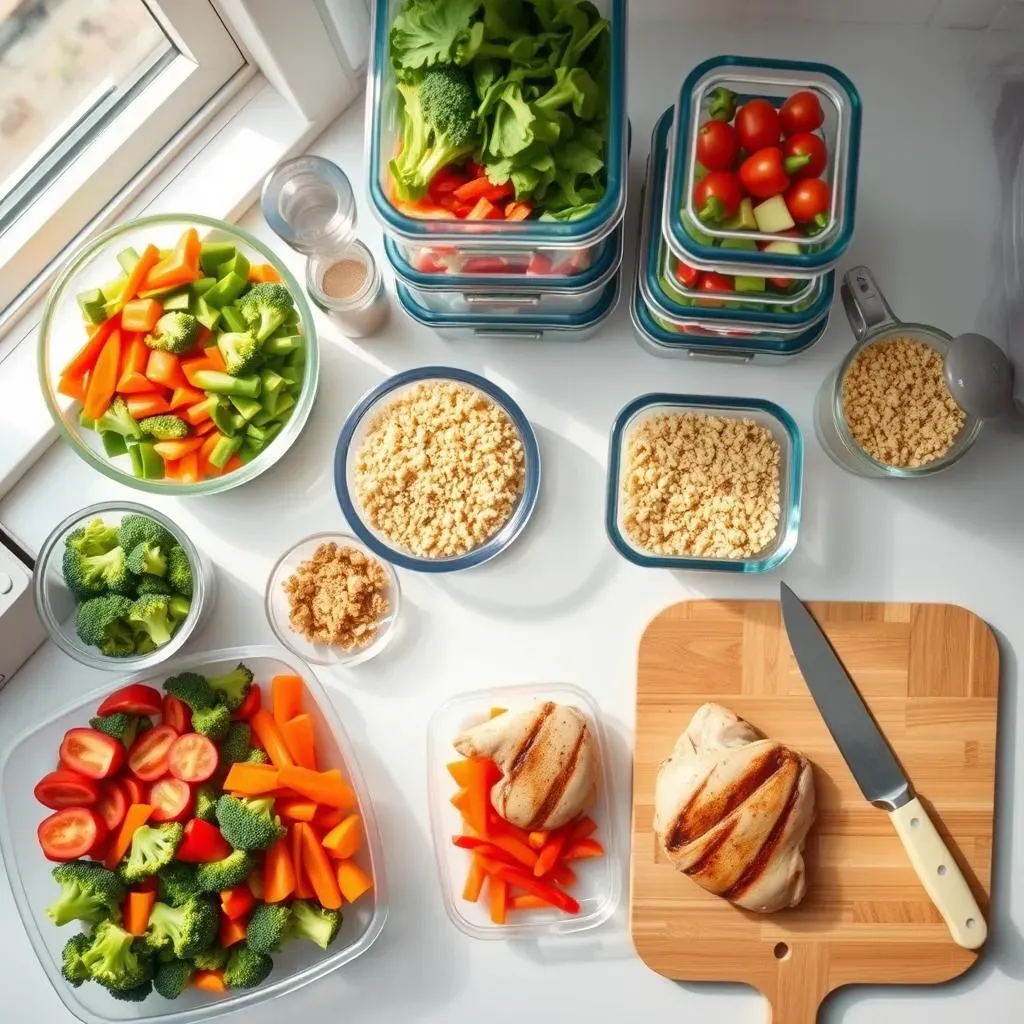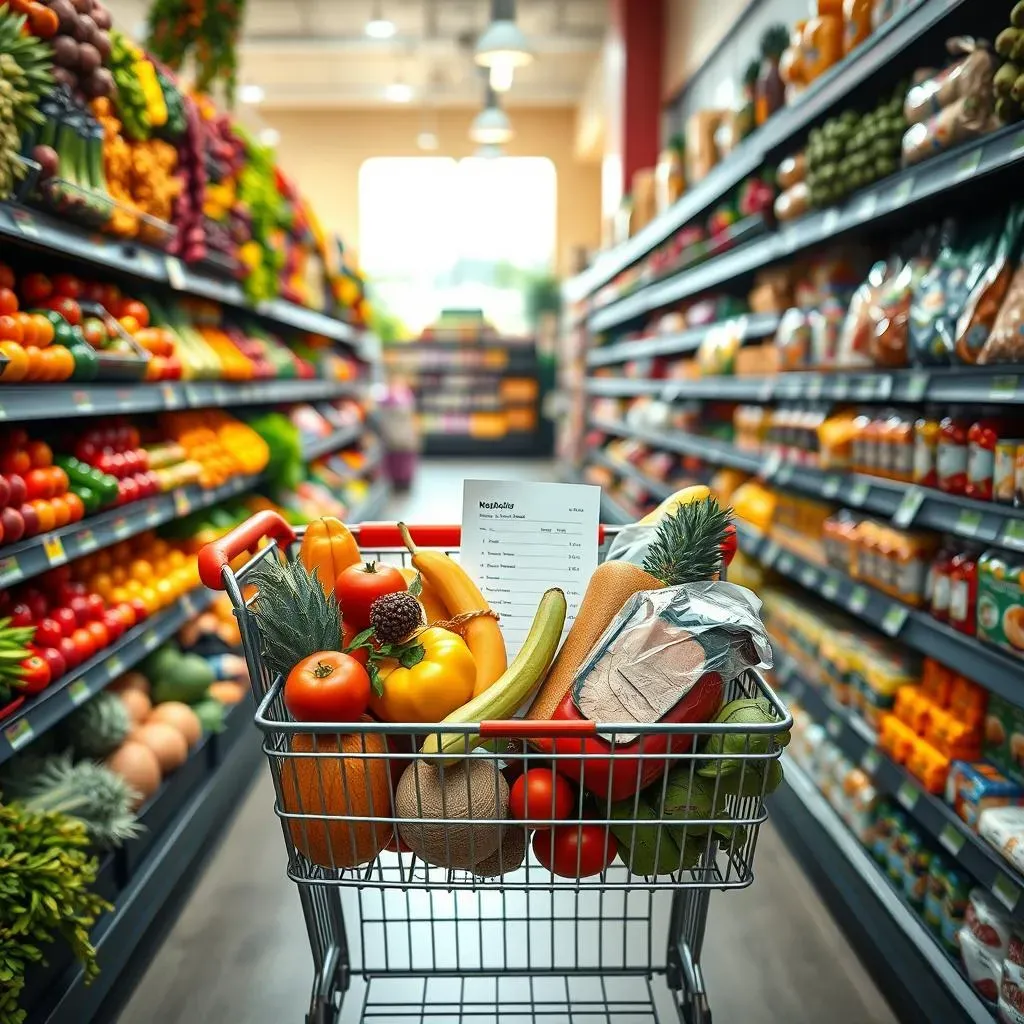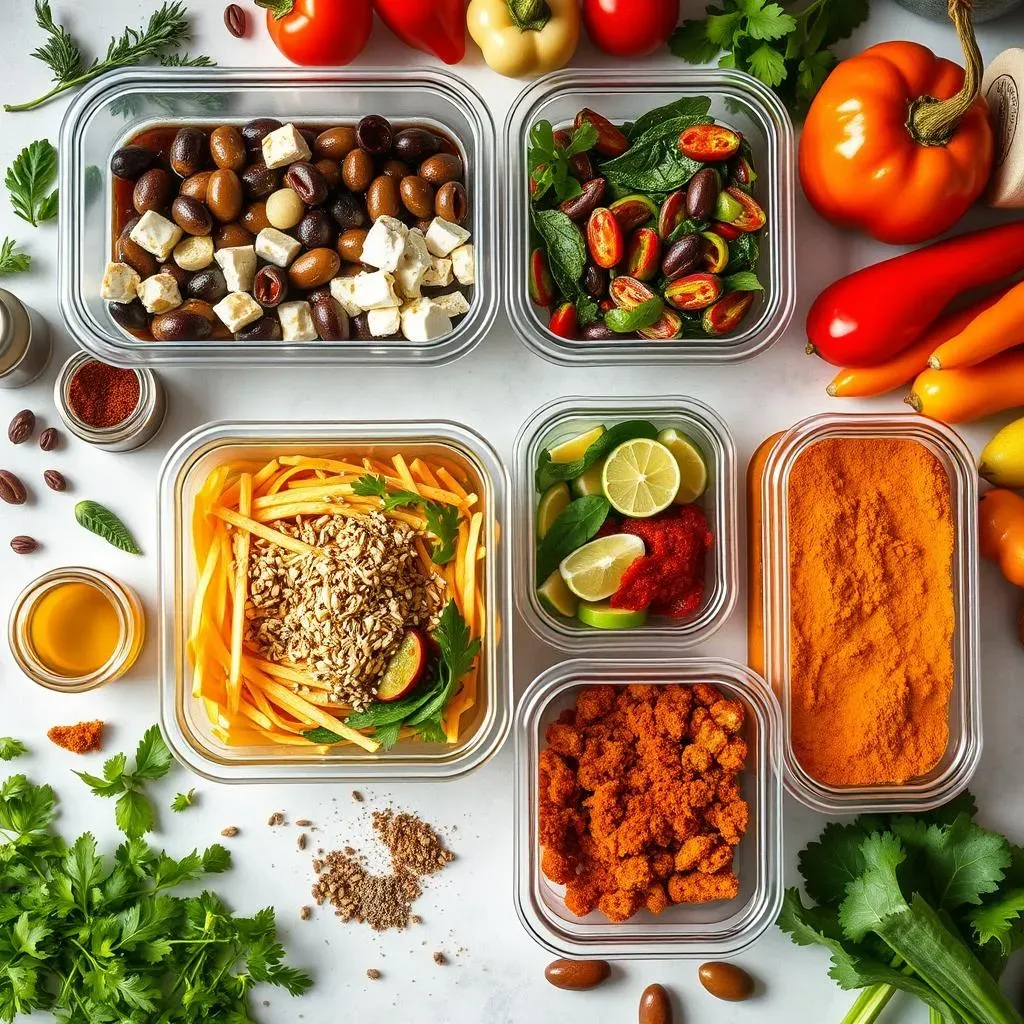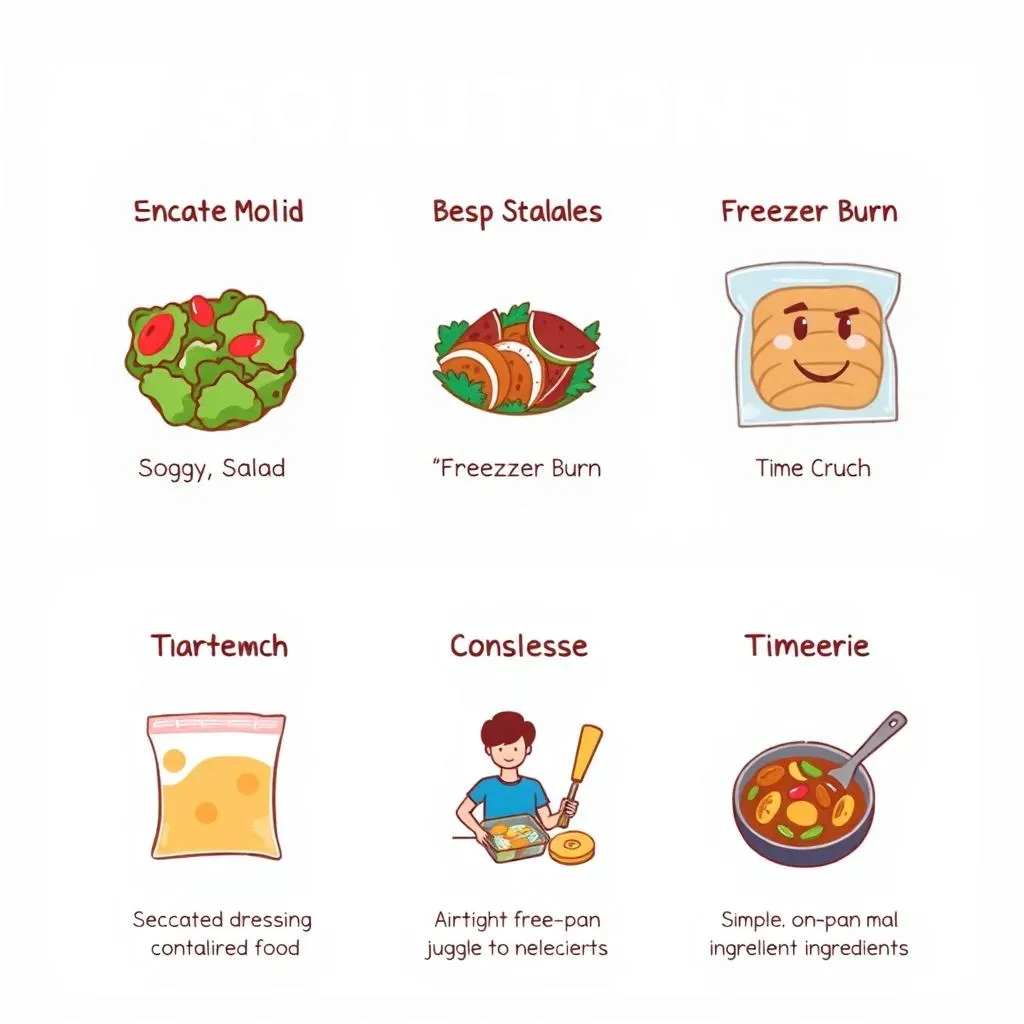Table of Contents
Staring down the barrel of another week filled with fast food temptations and the siren song of takeout menus? There's a better way. Learning how to meal prep healthy isn't just a trendy hashtag; it's a game-changer for your well-being, your wallet, and your precious time. Imagine a week where nutritious, delicious meals are already waiting for you, banishing those last-minute, unhealthy decisions.
Mastering the Basics: How to Meal Prep Healthy

Mastering the Basics: How to Meal Prep Healthy
Getting Started: Your Meal Prep Mindset
so you're ready to dive into the world of meal prep. Awesome! But before you even think about recipes or containers, let's talk mindset. This isn't about restrictive dieting or spending your entire Sunday chained to the stove. It's about making conscious choices to fuel your body with good stuff and reclaim some time during the week. Think of it as an act of self-care. Ask yourself: What are my goals? Save money? Eat healthier? Reduce stress? Knowing your "why" will keep you motivated.
Start small. Seriously. Don't try to overhaul your entire diet overnight. Pick one meal to focus on – maybe it's lunch. Or prep just a few days' worth of food to begin with. The key is to build a sustainable habit, not burn out after week one. Also, forgive yourself if you skip a week or two. Life happens! Just jump back in when you can.
The Essential Gear: What You Need to Succeed
You don't need a fancy kitchen or a ton of gadgets to meal prep like a boss. But having a few key items on hand will make the process much smoother. First up: containers. Invest in a good set of airtight containers. Glass or BPA-free plastic are both great options. Make sure they're stackable to save space in your fridge. I'm a big fan of the divided containers for portion control and keeping things separate.
Next, sharp knives and a cutting board are essential for efficient chopping and prepping. A large mixing bowl is perfect for tossing salads or combining ingredients. And don't forget measuring cups and spoons for accurate portioning. Nice to have items include a food scale, a spiralizer (for veggie noodles!), and a slow cooker for hands-off cooking.
- Containers: Airtight, stackable, glass or BPA-free plastic
- Knives & Cutting Board: Sharp and sturdy
- Mixing Bowl: Large and versatile
- Measuring Tools: Cups, spoons, food scale (optional)
Planning Your Attack: Choosing Recipes & Scheduling Prep Time
Now for the fun part: picking your recipes! Start with meals you already enjoy and know how to make. Don't try to be a gourmet chef right off the bat. Simple is key. Think about recipes that use similar ingredients to minimize waste and save time. For example, if you're making chicken breasts for one meal, use some of the leftover cooked chicken in a salad or wrap for another meal.
Once you've chosen your recipes, schedule your prep time. Be realistic about how much time you have available. Sunday afternoons are a popular choice, but maybe you prefer to spread it out over a couple of evenings. Find what works best for your schedule and stick to it. Write it down in your calendar like any other important appointment. And remember, even 30 minutes of prep is better than nothing!
Smart Shopping & Recipe Choices for Healthy Meal Prep

Smart Shopping & Recipe Choices for Healthy Meal Prep
Navigating the Grocery Store: Your Healthy Haul
so you've got your meal prep plan, now it's time to hit the grocery store. But before you blindly wander the aisles, armed with your list, let's talk strategy. The goal here is to get the most nutritious bang for your buck, without blowing your budget or succumbing to impulse buys. Stick to the perimeter of the store as much as possible. That's where you'll find the fresh produce, lean proteins, and dairy – the real MVPs of healthy eating. Avoid the processed food-laden inner aisles whenever you can.
Read labels like your life depends on it. Seriously! Pay attention to serving sizes, ingredients, and nutritional information. Look for foods that are low in added sugar, sodium, and unhealthy fats. And don't be fooled by clever marketing. Just because something is labeled "natural" or "organic" doesn't automatically make it healthy. When it comes to produce, buy what's in season. It's usually cheaper and tastes better. And don't be afraid to buy frozen fruits and vegetables. They're just as nutritious as fresh and can be a lifesaver when you're short on time.
Grocery Shopping Tip | Details |
|---|---|
Shop the Perimeter | Focus on fresh produce, lean proteins, and dairy. |
Read Labels Carefully | Pay attention to serving sizes, ingredients, and nutritional information. |
Buy In-Season Produce | It's cheaper and tastes better! |
Don't Fear Frozen | Frozen fruits and vegetables are just as nutritious as fresh. |
Recipe Remix: Adapting for Health & Efficiency
So, you've got a stack of recipes, but they're not quite meal-prep friendly? No problem! With a few tweaks, you can transform almost any recipe into a healthy, efficient meal prep masterpiece. The key is to focus on simple swaps and modifications that boost the nutritional value without sacrificing flavor.
For example, swap out white rice for brown rice or quinoa. Use lean ground turkey instead of ground beef. Add extra vegetables to bulk up the meal and increase the fiber content. And don't be afraid to experiment with different herbs and spices to add flavor without adding extra calories or sodium. If a recipe calls for cream or butter, try using Greek yogurt or avocado instead. These are just a few examples, but the possibilities are endless. Get creative and have fun with it!
- Swap refined grains: Choose brown rice, quinoa, or whole wheat pasta over white rice or pasta.
- Lean protein sources: Opt for chicken breast, turkey, fish, or beans instead of fatty meats.
- Load up on veggies: Add extra vegetables to every meal for added nutrients and fiber.
- Healthy fats: Use avocado, nuts, or olive oil instead of butter or processed oils.
Avoiding Meal Prep Boredom: Keeping Healthy Eating Fun

Avoiding Meal Prep Boredom: Keeping Healthy Eating Fun
Spice It Up: Flavor Variations & Creative Twists
Let's be real, eating the same chicken and broccoli every day is a one-way ticket to Meal Prep Purgatory. The key to sticking with it long-term is variety. And that starts with flavor. Don't be afraid to experiment with different herbs, spices, and sauces. One week, your chicken can be Mexican-inspired with chili powder, cumin, and salsa. The next, it's Mediterranean with oregano, lemon juice, and a sprinkle of feta. Get a spice rack and use it!
Think outside the box when it comes to sauces and dressings. Instead of relying on store-bought options loaded with sugar and preservatives, make your own. A simple vinaigrette with olive oil, vinegar, and Dijon mustard can transform a boring salad. Or try a creamy avocado dressing for a healthy dose of fats. The possibilities are endless. And don't forget about condiments like sriracha, hot sauce, and kimchi to add a kick to your meals.
Here are some flavor profile ideas:
- Mediterranean: Lemon, oregano, garlic, feta cheese
- Asian: Soy sauce, ginger, garlic, sesame oil
- Mexican: Chili powder, cumin, paprika, lime
- Indian: Curry powder, turmeric, ginger, coriander
Mix & Match Magic: Ingredient Swaps & Meal Remixing
Another way to beat meal prep boredom is to embrace the power of mix and match. Instead of making the same exact meals every week, prep a few key ingredients that can be used in different ways. For example, cook a big batch of quinoa, roast a tray of vegetables, and grill some chicken breasts. Then, you can mix and match these ingredients to create different meals throughout the week. Quinoa bowls, chicken salads, veggie wraps – the possibilities are endless!
Don't be afraid to get creative with your leftovers. Turn leftover roasted chicken into a flavorful soup or stew. Use leftover cooked vegetables as a topping for pizza or frittatas. And if you're really feeling adventurous, try repurposing ingredients into entirely new dishes. The key is to see your meal prep ingredients as building blocks, rather than fixed meals. It's like playing culinary LEGOs!
Troubleshooting Your Meal Prep: Common Issues & Solutions

Troubleshooting Your Meal Prep: Common Issues & Solutions
Tackling the Soggy Situation: Preventing Watery Meals
so you've prepped your meals for the week, and by day three, everything's swimming in a pool of its own juices. Yuck! Nobody wants a soggy salad or a watery stir-fry. The key here is to separate wet and dry ingredients. Pack dressings and sauces separately in small containers and add them just before eating. For salads, layer the ingredients with the greens on top and the heavier, wetter ingredients at the bottom. This will help prevent the greens from getting soggy.
Another tip is to avoid overcooking your vegetables. Overcooked vegetables release more moisture, which can lead to soggy meals. Steam or roast your vegetables until they're just tender-crisp. And if you're meal prepping soups or stews, let them cool completely before storing them in the fridge. This will help prevent condensation from forming inside the container. Trust me, your taste buds will thank you.
The Freezer Fiasco: Avoiding Freezer Burn & Flavor Loss
Freezing meals is a fantastic way to extend their shelf life and have backup options on hand. However, freezer burn and flavor loss can be major bummers. To prevent freezer burn, make sure your food is properly wrapped. Use airtight containers or freezer bags and remove as much air as possible before sealing. Vacuum sealing is even better if you have the equipment.
To minimize flavor loss, consider flash freezing individual portions before packing them together. This helps to preserve the texture and flavor of the food. And don't forget to label everything with the date and contents. Frozen meals are best consumed within 2-3 months for optimal quality. Also, be mindful of the types of food you freeze. Some foods, like lettuce and cucumbers, don't freeze well and will become mushy. Stick to freezing cooked meals, soups, stews, and individual portions of meat or vegetables.
Freezer Issue | Solution |
|---|---|
Freezer Burn | Use airtight containers or freezer bags, remove air, vacuum seal if possible. |
Flavor Loss | Flash freeze individual portions, label with date and contents, consume within 2-3 months. |
Mushy Texture | Avoid freezing foods like lettuce and cucumbers. |
Time Crunch SOS: Streamlining Your Prep Process
Life gets busy, and sometimes you just don't have hours to spend meal prepping. That's okay! There are plenty of ways to streamline the process and get healthy meals on the table in less time. First, focus on simple recipes with minimal ingredients. One-pan meals, sheet pan dinners, and slow cooker recipes are your best friends. Utilize pre-cut vegetables and pre-cooked proteins to save time on chopping and cooking.
Batch cooking is another great way to maximize your efficiency. Cook a large batch of grains, like rice or quinoa, and use it in different meals throughout the week. Roast a tray of vegetables and add them to salads, wraps, or bowls. And don't be afraid to enlist the help of family members or roommates. Delegate tasks like chopping vegetables or washing dishes to make the process go faster. Remember, even 30 minutes of prep is better than nothing. Every little bit helps!
Your Meal Prep Journey: The Healthy Habit That Sticks
So, you've reached the end of this guide, but really, it's just the beginning of your journey. Remember, learning how to meal prep healthy is a marathon, not a sprint. Don't get discouraged by initial hiccups or the occasional craving for something less virtuous. The key is to experiment, find what works for your lifestyle and taste buds, and most importantly, be kind to yourself. Embrace the flexibility of meal prep, adapt as your needs change, and celebrate the small victories along the way. With a little planning and a dash of creativity, you'll be well on your way to enjoying delicious, healthy meals all week long, effortlessly!